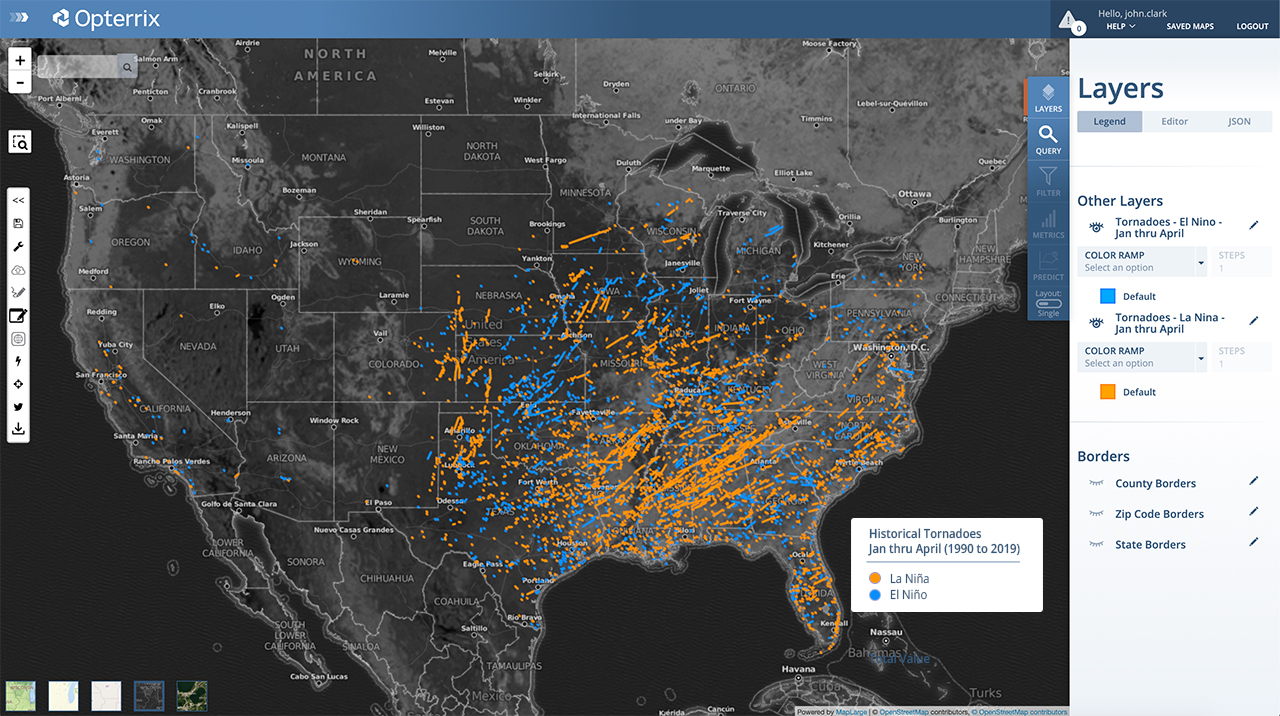1 min read
La Niña Could Bring an Active Spring Severe Weather Season
John Clark Feb 24, 2021 12:00:00 AM

With spring around the corner and the fact that the central Pacific Ocean is in a La Niña phase, what can that tell us about the severe weather expected for the next couple of months?
As of Monday, NOAA’s Climate Prediction Center has confirmed that a La Niña phase is currently present. ENSO (El Nino-Southern Oscillation) consists of three phases, El Niño when sea surface temperatures through the equatorial Pacific Ocean are warmer, the Neutral phase, and the La Niña phase when the sea surface temperatures in the same region are cooler.
There have been multiple research papers written on how the ENSO phases affect the Spring weather patterns of the United States. These seasonal forecasts do not pin down specific dates or locations. They do point to trends that have been repeated during the phases of ENSO.
La Niña alters the expected regions of tornado outbreaks in a few ways. The jet stream will be found further north and have steeper changes, allowing for storms to set up further north. Locations of low-level winds are much more common over the Plains in April of La Niña years. The additional energy sources are more concentrated in aerial coverage in La Niña spring while more spread out during El Niño seasons.
These conditions combine to shift the focus of La Niña’s springtime tornado activity to the north and west of El Niño or neutral seasons. The month of March in La Niña years sees tornado outbreaks to be more likely from the Lower Mississippi Valley to northern Indiana. April is usually more active than February or March in a La Niña spring. The increased activity can be seen east of the Rockies, especially from Nebraska and Kansas to Wisconsin through Ohio. The overall number of tornado outbreaks also increases during La Niña spring.
Being in a La Niña spring does not guarantee that the conditions will increase severe weather season. It must also be understood that tornadoes do occur outside of the normal and expected areas.
Resources:
CPC/NCEP: ENSO Status
https://www.cpc.ncep.noaa.gov/products/analysis_monitoring/lanina/enso_evolution-status-fcsts-web.pdf
AMS Journal: The Impact of El Niño–Southern Oscillation (ENSO) on Winter and Early Spring U.S. Tornado Outbreaks
https://journals.ametsoc.org/view/journals/apme/56/9/jamc-d-16-0249.1.xml
